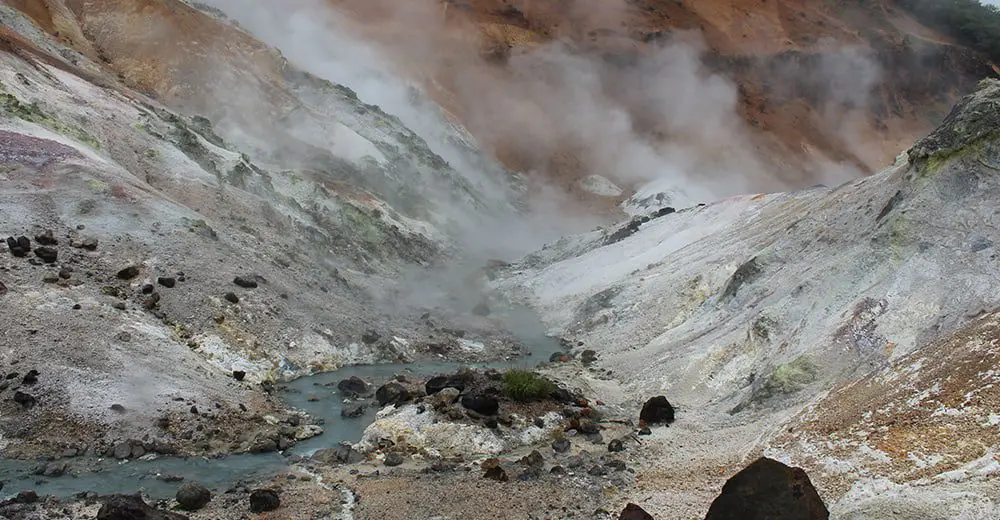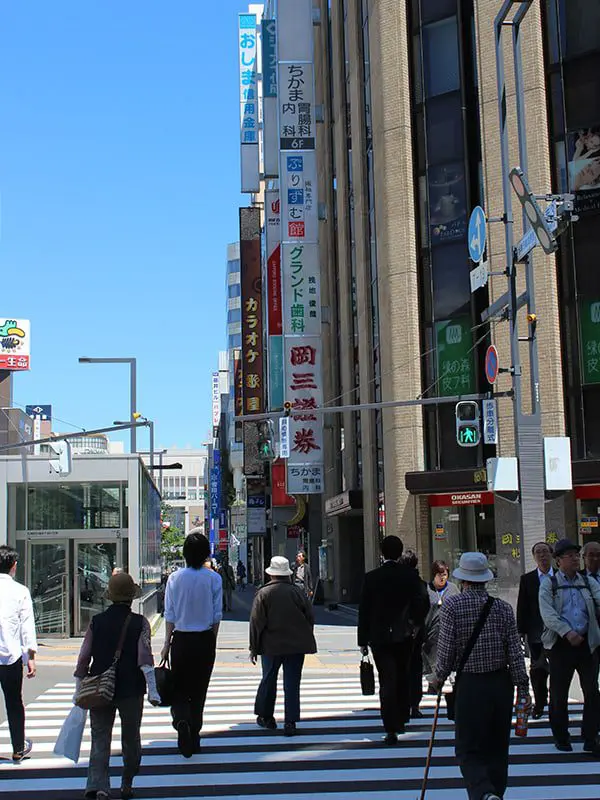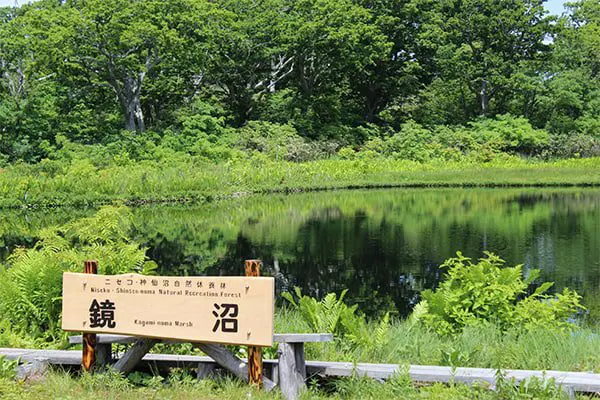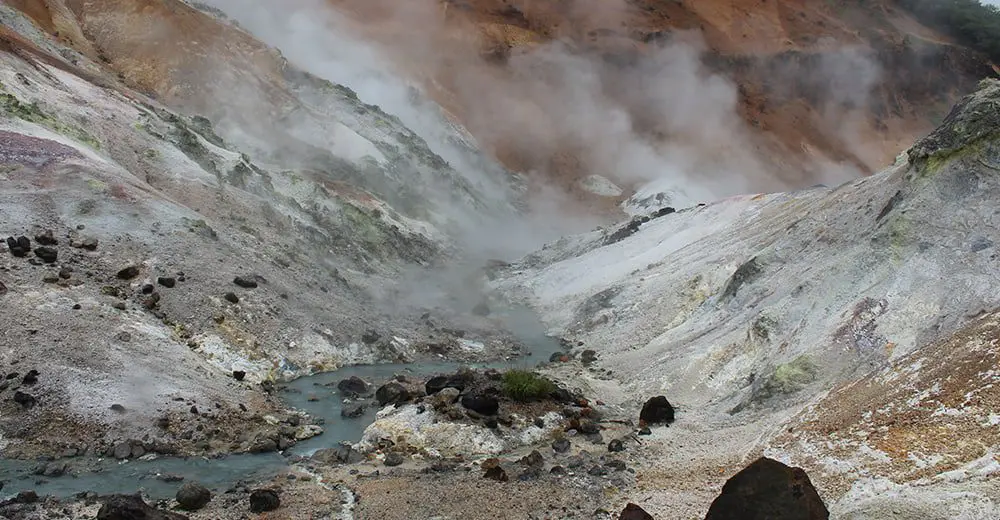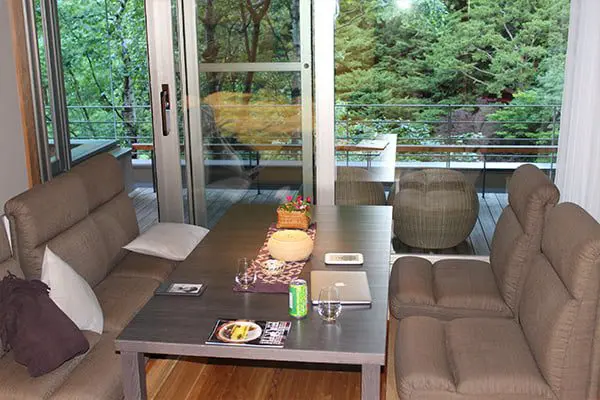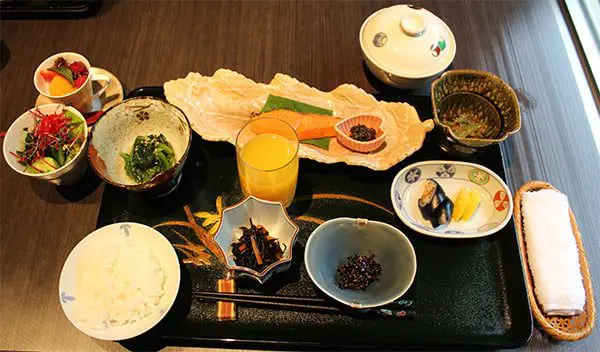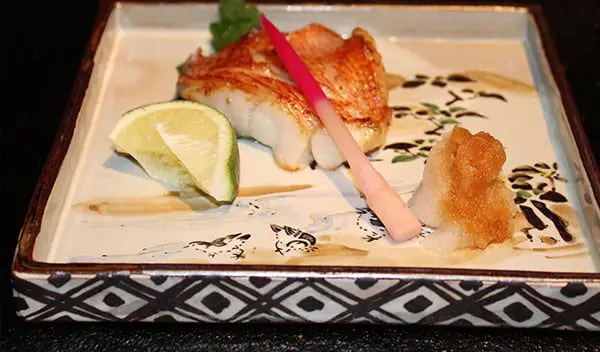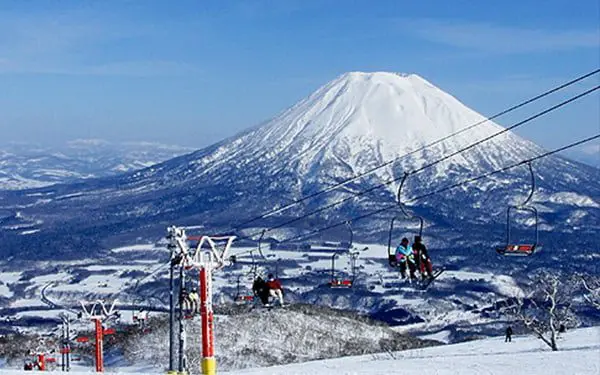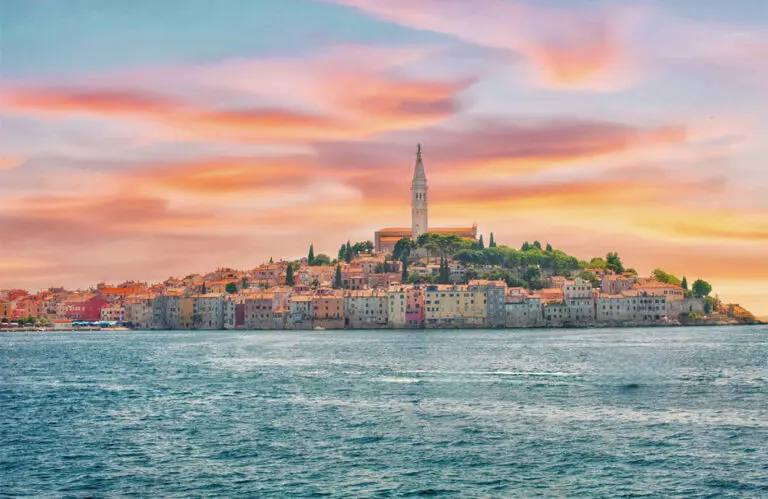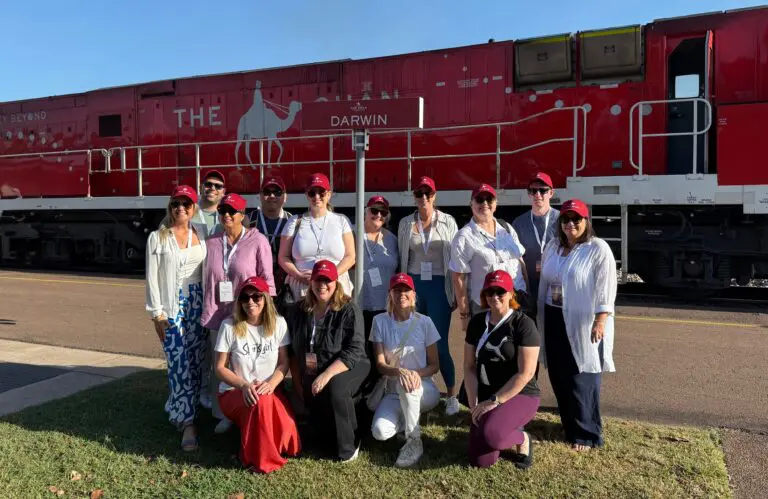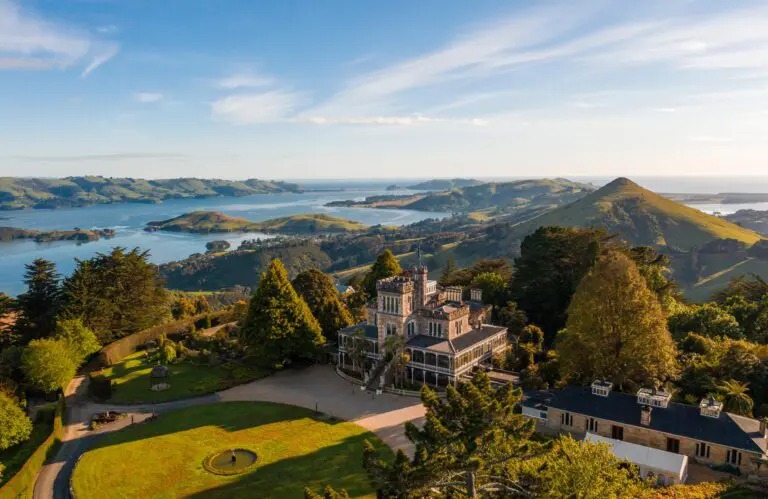Food author Scott Haas is eating his way through Hokkaido and discovers ‘little Australia’ home to expats who seek phenomenal powder skiing followed by hot tubs and cold or hot sake.
We’ve been asked to wait in a small, open seated area of Chitose airport for our rental car and as the only Westerners among about a dozen Japanese, we do what we’re told and mimic their behavior. Which means no talking and no sudden movements.
I don’t want to find out what might happen if I talk or move; I can guess, and the answer won’t be pretty. Twenty minutes go by, and then a young woman in what appears to be a fast food uniform shows up with a laminated signboard and without a word, everybody but us gets up and follows her out.
We grab our gear, having been abandoned, and fall in line, and good thing, too, because if we’d waited another few seconds, the shuttle bus we hope is taking us to a rental car lot would have left without us.
The car is a terrific hybrid with an English-speaking GPS, which we program to take the scenic route to the famed hot springs and spa village of Noboribetsu.
After all, this is Hokkaido, right?
Japan’s northernmost island, a natural paradise surrounded by the Pacific Ocean and the Sea of Japan, unspoiled, and filled with enormous forests, active volcanos, the best gastronomic ingredients in Japan, and amazing wildlife.
We’re here to discover the essence of Japan: its finest, a refinement of mood, cuisine, digs, and nature. We want Japan, and we want it now. Not the crowded cities, the packed shrines and temples, or the three-star Michelin restaurants without a single Japanese customer. We want to experience Japan before it became a top tourist destination for busloads of foreigners.
First stop: Noboribetsu, and what better way to go than along the fabled southern coast, which is girded by the roaring Pacific.
The drive along Route 36, however, while offering splendid oceanic vistas periodically, is not at all what’s expected. Rather than tranquil lakes, great restaurants, bears, foxes, and migratory birds, we pass by strip malls as well as huge, industrial plants and refineries which block our views and contaminate the air. But wait! What’s that up ahead?
It’s a giant plastic bear! And there’s a giant crab! And now I see a giant fish!
“What kind of fish?” I ask my companion. She’s driving.
“It’s not a real fish,” she says sensibly.
“But it must have been modeled on a type of fish, don’t you think?”
She does not think that.
Buses crowd the asphalt lot of the Japanese version of a roadside cafeteria before which the non-specific fish has been placed, and hundreds of people are disgorged so that they can go inside, lift plastic trays for a buffet, and line up for a brief lunch on what is designed to be a grand tour of the island.
Japan loves its nature, that’s true, but it’s also a nation devoted to industrialization and the necessity of feeding millions of hungry citizens and tourists.
Soon we catch a glimpse of several small rivers, which are identified by the wonderful Kanji symbol, 川, that even a child would know signifies the object it defines.
And then, just up ahead, we see ancient volcanic mountains, rounded out by centuries of wind and water erosion, saddled by deciduous birch forests intersected by pine.
Rolling down the window, the stink of the factories is gone. Instead, bracing, almost perfumed air fills the car. So this is Hokkaido!
We chose Noboribetsu as a starting point for the ten days to be spent on Hokkaido chiefly due to its reputation as a quiet spa town, the “Hell Valley,” of sulphuric geology and hot springs within its midst, and its being inside Shikotsu-Toya National Park, which is riddled with trails.
And one more thing: Few things are more enjoyable than staying at a good ryokan in Japan. The best of these traditional Japanese hot springs inns, once operating like motels for businessmen seeking discretion for illicit affairs, revamped their business plans around 1990 when the so-called “Japanese Bubble” forced people to come up with new ways to generate revenue.
Simply put: They invited the wives.
From about 1990 on, the fanciest inns renovated the bedrooms and onsen (hot spring baths), improved the menus, and introduced a gentility the fellas hadn’t missed.
Nowadays, the best of the ryokans, even the old school ones, take luxury to a new level, stripping away everything that isn’t necessary and turning what’s deemed essential into gemlike perfection.
Takinoya, in the heart of Noboribetsu, is a classic sort of place, beside a small river and with views from rooms of a dense forest.
“We opened in 1917,” owner Hidero Suga tells me one fine morning during our five day stay. Suga-san is a tall, distinguished man in his seventies wearing a beautifully tailored Western suit. I’m in a yukata, which is a flimsy, comfortable cotton robe worn by guests between hot baths. “Same family. I’m third generation.”
The inn’s rooms are huge, even by western standards, and perfect for naps between the long kaiseki dinners of crazy-delicious, multiple courses of small bites of what’s mostly local fish and vegetables.
The whole place was renovated seven years ago; indoor baths and outdoor baths provide soaks in very hot water that comes from natural sources, which explains why it is milky blue and extremely hot.
“We have an advantage being in Hokkaido,” says Suga-san. “Not just the hot springs, but the food.”
Indeed, the Japanese breakfasts of tiny, grilled river fish, steamed eggs, salads, summer fruit, tofu, and miso soup are amazing. Dinners vary each night, as do the breakfasts, and were flawless: Pumpkin flavored tofu, Salmon soup with vegetables, raw red snapper with ponzu, grilled beef with a foam of zucchini, ocean eel with baby ginger, tempura, and don’t forget all-the-rice-you-can eat. It sounds like a lot, but it isn’t.
Portion sizes are perfect for newborn babies, meant to introduce flavors, sort of a meet-and-greet of tastes.
Only one thing may hold you back: In Japan, it’s considered rude to leave any rice in the first bowl that’s served.
“Our chef is Noburo Sato,” says Suga-san. He frowns, but I’m not sure if he really is displeased with Sato-san. “He’s 65 years old! And you know what? He has been here about 48 years!” Meaning? “Well, my grandfather was a chef, and he started this business, and we carry out his taste. Let’s just say it all could be better.”
It’s kind of a classic Japanese move Suga-san is making: Putting down his chef is false modesty. He knows and I know that his food is outstanding.
Between breakfast and dinner, guests have to go across the street and into the village. Lunches aren’t served at ryokans.
It’s slim pickings in little Noboribetsu. With one long, narrow main street lined mostly with souvenir shops, a few hotels, and some restaurants that show what they’ve got on countless laminated, colorful pages of photographs, it doesn’t take long to ID the two best joints around.
As the only soba restaurant in the village, Fukuan doesn’t have to compete for your yen, but compared to the soba in other Japanese cities, it’s first-rate. The man behind the counter, Ichiro Igaarashi, doesn’t say much: He is vigilant about making sure you love what he serves with help from three others in the steamy kitchen.
Choices include seven teuchi (handmade) soba noodles and fourteen (seven hot, seven cold) dry noodles with preparations that can be chicken and leeks in chicken broth, seaweed, raw egg, duck and leeks, and gooey, shredded yam. Most dishes cost about 1000 Yen, and a cold draft beer won’t set you back either.
Counter style seating, tatami seating, or western seating: It’s a very positive, relaxed vibe here, and one day when the owner decides to get rid of the tiny T.V. set on the counter, it will be perfect. On one of my several visits, the broadcast showed live footage of a train that was stalled because a man had set himself afire in it.
The reaction of the crowd in the restaurant? No pause in slurping.
Just up the street is a terrific, dark ramen joint called Enya, where Kaito Ishikawa served me bowls of great spicy noodles that were perfect on unseasonably cold rainy afternoons after summer hiking.
“That music is from the festival,” Kaito-san explained, as he turned up the volume of the place’s stereo system. It was a kitsch version of cacophonous sounds meant to inspire awe and fear when costumed actors pretended to be demons in a parade in late July. It sounded like Brian Eno from the 1980’s only without any regard for harmonies or hooks. “Nice, huh?”
Other than these two restaurants, and unless you want soft serve ice cream for which Hokkaido is famous in Japan, the only other place worth visiting in town is Hiratsuka Sake Shop.
This place completely rocks, and has one of the largest selecions of sake from all over Japan.
Hidenori Hiratsuka, is kind of grumpy, but if you have some knowledge of what you’re looking for, he’ll say more to you than, “no credit cards.” Instead, he’ll explain which sake he prefers, and why. I picked up one of the very best in Japan, a junmai daiginjo from a small producer called Otokoyama, for the extremely reasonable price of 5500 JPY (It can cost three times as much outside of Japan). Chilled later, it went well with…everything.
But here’s the thing: We hadn’t traveled to Hokkaido simply to indulge our appetites, take hot baths, and enjoy long naps. We were here for the nature, Japan’s finest, untrammeled and unique.
Just up a hill from the village center is a series of trails that took us through a small, but remarkably diverse ecological forest with numerous species of birds, views of active volcanic vents, and skittish foxes thought by Japanese to be clever and mischievous.
Amid signs warning of foxes, we made our way to hot, sulfurous Okunuma lake, a tiny and hot natural brook where we could soak our feet, and, eight miles away, Lake Kuttara, hauntingly remote, formed out of an ancient caldera.
“A lot of tourists started coming thirty-three years ago,” explained Isao Fujiyoshi, director of the National Park. “For the hot springs, sure, but mostly for the birds.”
Fujiyoshi-san takes out his fancy camera and for the next hour or so he shows me candid photos of a huge array of species.
He’s lost in the colors and sizes, and entering his world as he speaks makes me feel as if I’m in some surreal tale by Murakami: The reality of what we share isn’t as important to him as what’s been captured in images.
“This is a kitsutsuki,” he says fervently. It’s a woodpecker.” And it is beautiful, and it does matter more. Living here for decades has shaped this man’s consciousness, and I can sense a little of what nature’s intimacy has done for him. I envy him.
After five days of soaks, long meals, hikes, noodles, naps, and too much sake, we get back in the car and take a long, narrow road NW towards Kutchan, in a valley, near the base of Mount Yotei. Known as Ezo-Fuji by locals, after what the Ainu, the indigenous population, called it long ago, the volcanic tower dominates the landscape, and is breathtaking.
Niseko – ‘Little Australia’
Nearby is Niseko, “little Australia,” home to ex-pats who seek phenomenal powder skiing followed by hot tubs with new best friends and cold or hot sake. But we’re after something else. It’s summer, after all, and besides isn’t the point to experience Japan as if we’re Japanese? Yes and no. After all, I don’t want to stay at one of the huge, sprawling ryokans with all-you-can-eat buffets, hundreds of people crammed into hot baths, and karaoke rooms.
Fortunately, a fancy-pants ryokan-style property, Zaborin, opened just this June, and although it’s managed by an ex-pat Aussie who used to be Peter Grigg–now he’s Shouya (which means something like, “fly high,” or “shooting arrow”)–the place has a positively Japanese feel to it. Which means through Shouya’s design, an emphasis on minimalism, exquisite use of light and shadows, tatami rooms, and killer food.
The only thing that is very un-Japanese about it are the wall to ceiling windows everywhere: How unlike Japan where privacy is guarded!
“I was born in Yorkshire though brought up in Australia,” explains Shouya. His affability is trump. And his vigor is flat out intimidating: The man has some serious energy. “And I wanted the windows to look out on the pastures and forests since they remind me of Yorkshire.”
Trattoria Blue Cielo
From Zaborin it’s a quick drive into town for first rate Italian at Trattoria Blue Cielo. Or Torimatsu, a hole-in-the-wall yakitori joint so good that Tony Bourdain featured it in an episode. I chat a bit with the owner, a busy, bald, bespectacled man who dutifully answers my questions, but who remains busy tossing huge pieces of squid, tuna hearts, and the more traditional chicken onto a tiny grill in front of the counter between us.
Hokkaido thus far has been a distillation of all the things I love about Japan, but without the crowds and fanfare: Delicious food, good sake, hot baths, long walks.
Before we leave for Sapporo, we take a couple of short hikes. One is at the foot of Mount Yotei to a sunken lake, through a pine forest, and the other is to Kagami-numa, or “mirror pond,” with a forager who leads us into a stunning birch forest to a serene, isolated body of water that reflects the skies and mountains.
Hokkaido lives up to its reputation, but believe me: It takes effort. Japanese talk about the sanctity of nature, yet the industrialization we saw on the coastal road is typical. Inside the ryokans, noodle shops, and on the trails, it’s peace and love and harmony. The overall environment? Needs work.
Still, who am I talk? After nearly two weeks of raw fish, mountain vegetables, and all sorts of gooey stuff I ate, after wearing yukata almost 24/7, and talking about Zen as if I was born into it, the first meal I had in Sapporo was at Brooklyn Parlor.
Cheeseburger and fries and a tall, cold draft beer while Jay Z played on the sound system. The room was entirely Japanese, except for me and my companion, and it was clear that the culture is confident enough to include flavors and culture from the West to their own proud traditions.
Now that’s living.



